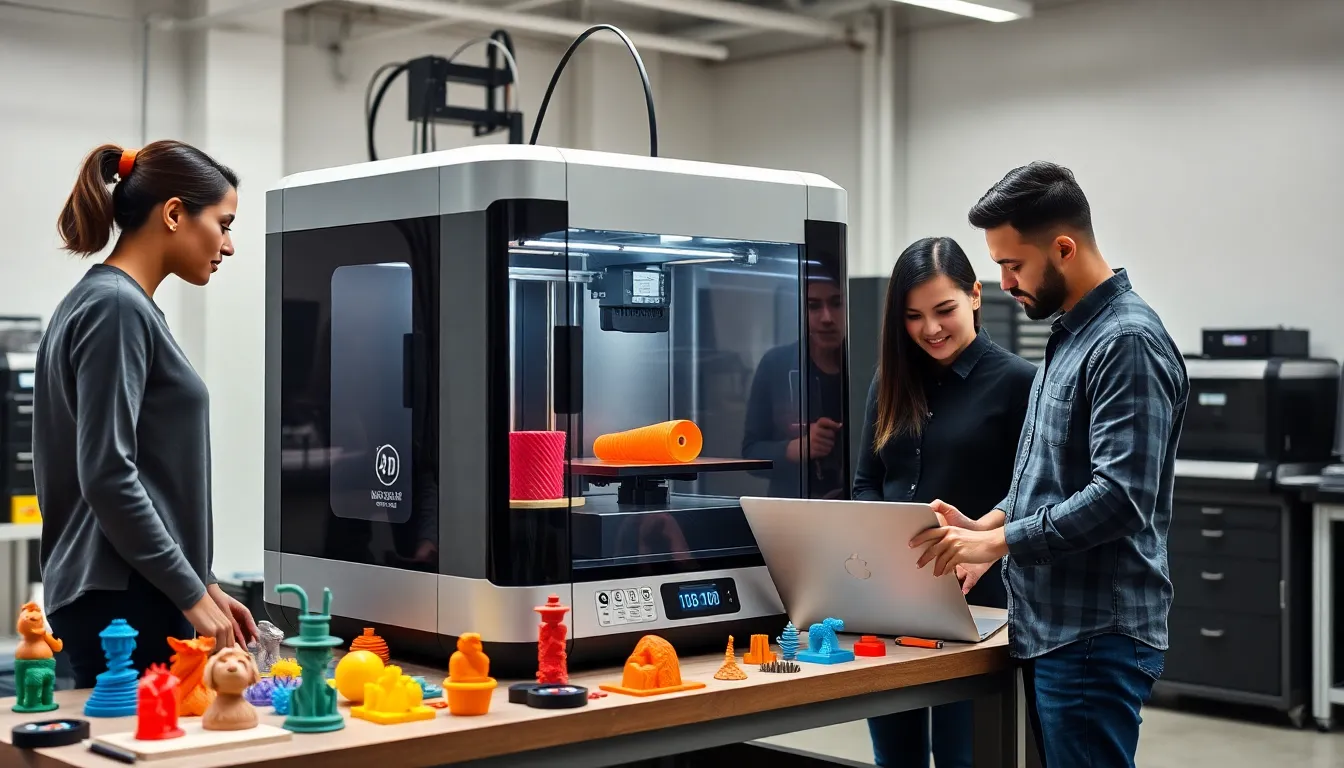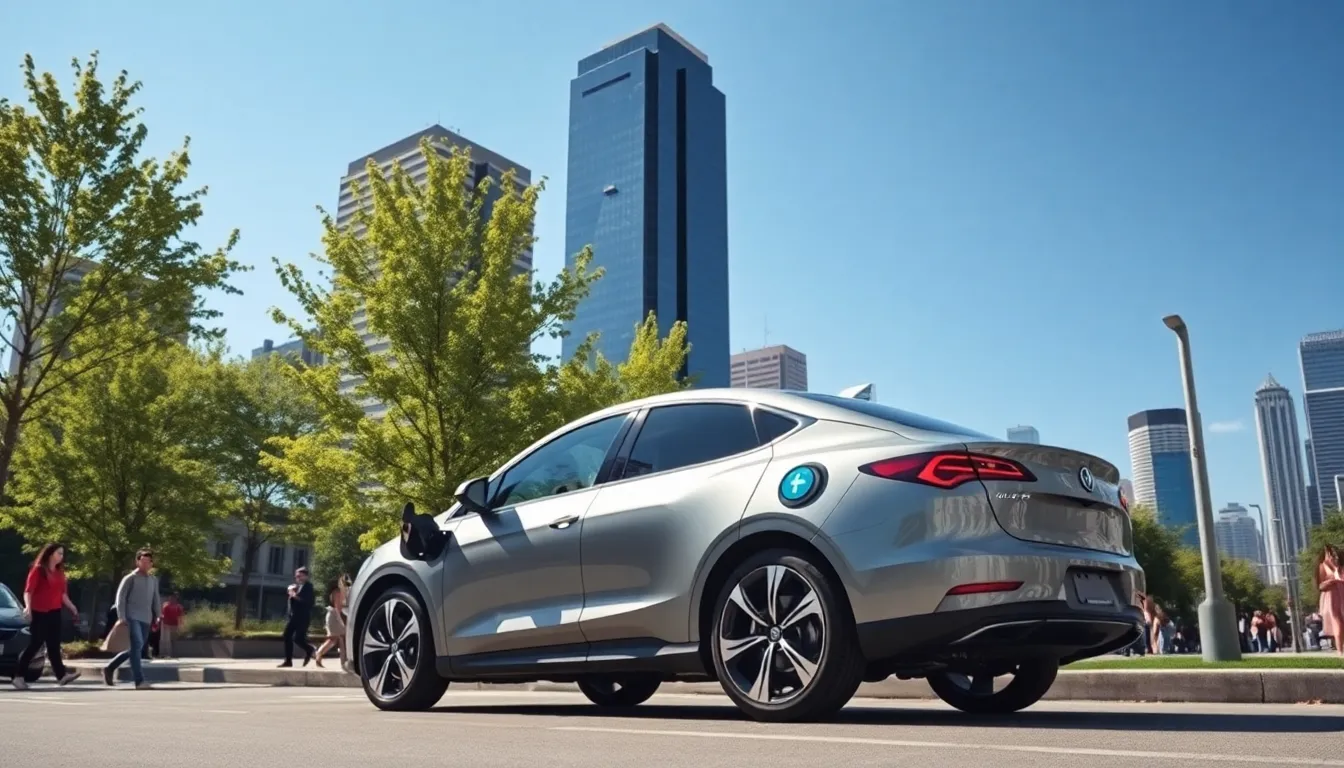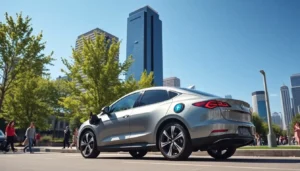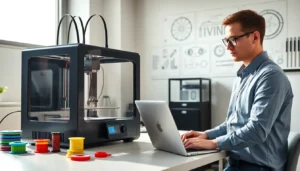When it comes to 3D printing, understanding the price tag is just as important as knowing the capabilities of the machine. After all, who wouldn’t want to know why their shiny new printer costs more than their last vacation? In the world of 3D printing, prices can vary wildly, influenced by a myriad of factors. Buckle up as we explore the ins and outs of 3D printing machine pricing, and by the end, you’ll be ready to make an informed investment, perhaps one that could even print you a new vacation.
Table of Contents
ToggleFactors Influencing 3D Printing Machine Prices

Several key factors contribute to the price of 3D printing machines. First, the type of technology employed plays a significant role. Entry-level printers often use Fused Deposition Modeling (FDM), which is typically more affordable, while high-end printers might use Stereolithography (SLA) or Selective Laser Sintering (SLS) technologies, which can command a higher price due to their advanced capabilities.
Next, the size and build volume of the printer cannot be overlooked. Larger machines, capable of producing bigger prints, typically come with heftier price tags. Also, print speed and resolution also influence costs. Higher resolution prints require sophisticated components, driving up the price even further.
Another element to consider is brand reputation. Well-established brands often come with a premium price because they offer reliability, customer support, and extensive warranties. Finally, features such as connectivity options, user interface quality, and included software can also add to the overall cost.
Types of 3D Printing Machines and Their Costs
The market offers a variety of 3D printing machines, each with unique functionalities and costs. Here are some common types:
- FDM Printers: These are the most accessible, often retailing between $200 and $2,000. They’re perfect for hobbyists and beginners interested in creating prototypes or simple models.
- SLA Printers: Providing higher resolution prints, SLA printers generally start at around $1,000 and can soar to over $5,000 for professional-grade models. They are ideal for detailed work, especially in fields like jewelry and dentistry.
- SLS Printers: Typically designed for industrial use, these machines range between $5,000 and $100,000, depending on their build size and material compatibility. They are favored for their strength and durability.
- Multi-Jet Modeling (MJM) Printers: Ranging from $10,000 to upwards of $250,000, these are predominantly used for high-quality production in industries, including automotive and aerospace.
Each printer type caters to different needs and price points, ensuring that there’s a suitable option for every budget.
Typical Price Ranges for Different Models
Understanding typical price ranges helps in budgeting for a 3D printer. Here’s an overview of where most models fall:
- Entry-Level Models: Expect to pay anywhere from $200 to $500 for basic models. These are best for casual users or educators.
- Mid-Range Options: These machines typically range from $500 to $2,000, offering a balance of quality and advanced features suitable for serious hobbyists.
- Professional-Grade Printers: Pricing generally starts at $2,000 and can go beyond $10,000. Users in industries like architecture and design often invest here.
- Industrial Machines: The most advanced printers, used for mass production or heavy-duty applications, can range from $10,000 to over $100,000.
The Impact of Technology Advancements on Pricing
As technology evolves, the pricing of 3D printing machines experiences significant shifts. Older technologies, like basic FDM, become more affordable as newer technologies emerge and competition increases.
Conversely, as cutting-edge technologies like advanced SLS and SLA models are developed, their initial prices might be steep but tend to drop as their production becomes more efficient and affordable. Companies embracing innovation often later offer better designs and features, meaning that what seemed expensive today could be more budget-friendly in a couple of years.
Cost of Ownership Beyond Initial Purchase Price
When considering a 3D printing machine, it’s crucial to factor in ownership costs beyond the purchase price. These costs can significantly affect overall expenditure. Consumables such as filament, resin, or powders can be a recurring expense.
Also, maintenance and repairs should not be ignored. High-end machines may require specialized parts and professional service, which can add up over time. Besides, software licensing fees and upgrades can also contribute to ongoing costs.
Finally, electricity usage for operation can influence the long-term cost: larger, industrial machines usually consume more power, which may impact utility bills.
Future Trends in 3D Printing Machine Pricing
Looking ahead, several trends could shape the future of 3D printing prices. One notable trend is the democratization of technology, which may lead to lower prices as more manufacturers enter the market.
Also, as more businesses begin to understand and adopt 3D printing as a viable manufacturing solution, the demand for machines could drive prices down.
Another possibility is the development of more sustainable materials and practices, which may initially raise costs but create a more balanced pricing structure as these options become mainstream. Eventually, both technological innovation and market dynamics will continue to influence how much consumers pay for their 3D printing machines.










